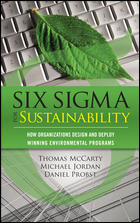Conventional wisdom in quality circles leads many to assume that if an inspector uses it, it must be calibrated. This is a lot like the debate over firearms which, when you really think about it, are bits of machinery that do nothing on their own but can do a lot of damage if misused.
In metrology we have similar benign bits of hardware that can create havoc if misapplied, but in the grand scheme of things rarely are. But many companies include them in their calibration program, probably more to keep auditors from asking silly questions than for any other reason.
| In metrology we have similar benign bits of hardware that can create havoc if misapplied, but in the grand scheme of things rarely are. |
The way to differentiate between what needs to be calibrated on a regular basis and what does not is to look at how an item is used. The question to be asked is: Is it used to identify something or is it used to qualify something? If you’re trying to identify the 1/-4 20 bolt from a 1/4-28 it falls into the ‘identify’ category and doesn’t need to be re-calibrated. If you’re attempting to determine that either bolt meets spec, you’re into ‘qualify’ territory and whatever is being used will need to be calibrated on a regular basis. In most cases, whatever is being used to ‘identify’ could never come close to determining that any defining element of the item under review meets a standard.
Typical of such devices are screw pitch gages which comprise a series of blades or leaves on which are machined (or stamped) a series of popular thread pitches. These items are used for a visual comparison and are not suitable for gaging products. Calibrating them is very expensive because it is a time consuming job and the precision of that calibration will be basically unusable. This is due to the fact that the eyesight of the user is a major source of error not to mention the user’s skill and judgment.
Radius gages of similar design can fall into either category depending on how they are used. If the radius in question is a ‘not to exceed’ dimension they could be considered a qualifying device.
Rules and tape measures can fall into either category. If the measurement has to be 8’6” within plus or minus 1/8” you’re attempting to qualify something. If you’re trying to determine if the item is 8’6” as opposed to the 8’4” model, you’re identifying it. Both are technically measured values but their importance and impact is significantly different.
One way to look at it is the degree of difference involved. If you could see the difference with little or no mechanical (or optical) aides, you’re probably identifying rather than qualifying. To reinforce this choice, the use to which the information is put can be a deciding factor. If subsequent processing will detect significant errors, that processing will be the ‘qualifying’ factor to determine acceptance to a standard or customer’s order.
Caution must be exercised in using these suggestions because some devices can be used for both situations even though the degree of precision required is quite different. An example of this would be a receiver who uses a micrometer to check incoming bar stock to differentiate items on a supplier packing slip. Since the micrometer does not need calibration like its shop or inspection department counterpart it must be differentiated to prevent it being used that way. This best way to do this is to label it as not calibrated as a warning in case it gets misplaced.
Another similar device to these is the surface finish patches on a plate that are used for visual and/or tactile comparison. Their effectiveness is determined by the user’s vision, sense of touch and judgment such that they are not suitable for qualifying anything other than to say an item has been machined, ground, lapped or honed, etc., and its finish appears to be coarser or finer than one of the patches being used for comparison. If the product requirements call for a specific surface finish, it has to be measured using the appropriate instruments.
Like any other device used in your company, these devices must be identified as having restricted use or capability and all personnel must know this. Effective labeling and reminders to staff regarding the use of tools not in your calibration system should keep their use under control and reduce some calibration costs as well.



